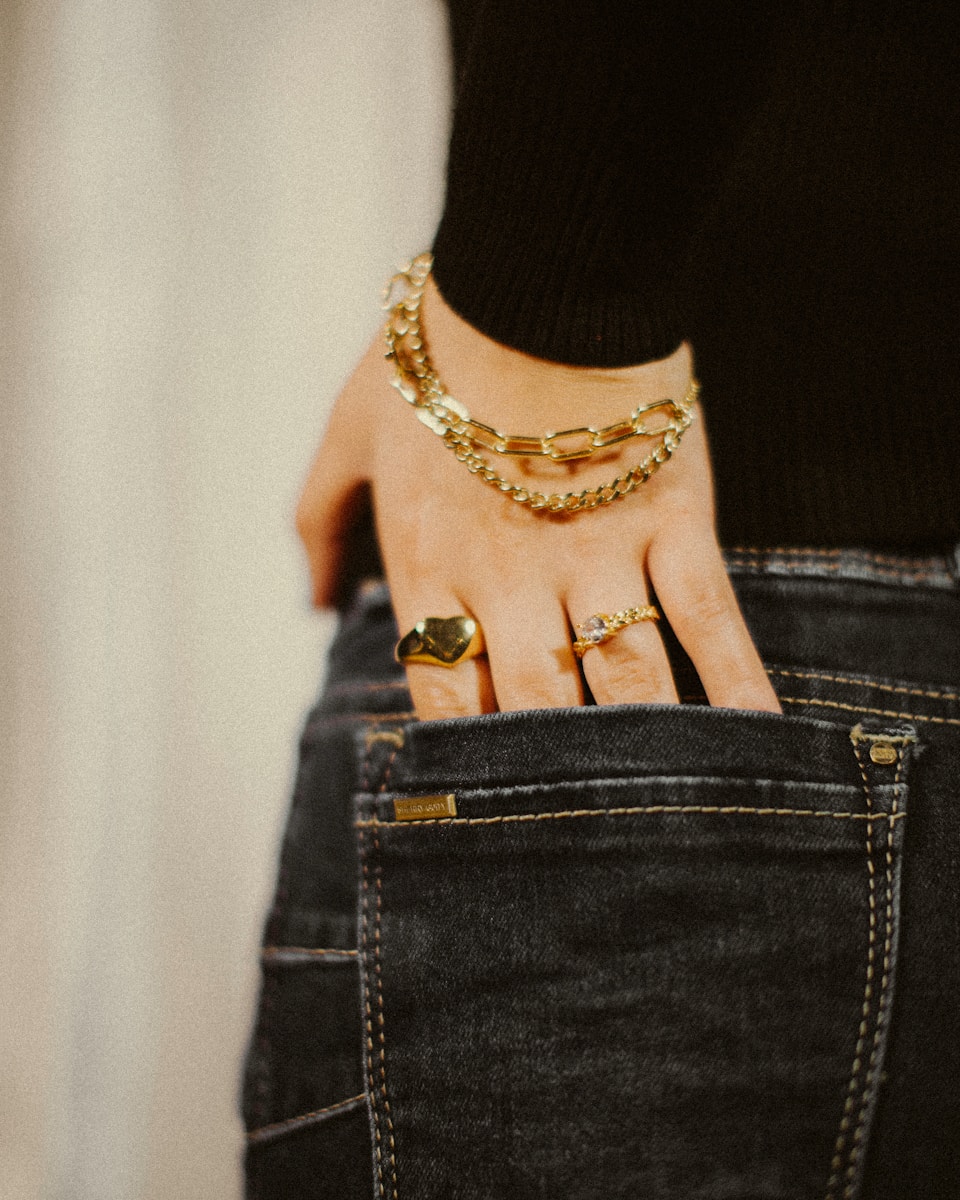Introduction: More Than Just Jewelry—A Conversation at Your Fingertips
Jewelry has always been a language—sometimes bold, sometimes subtle, but always expressive. And within the lexicon of personal adornment, rings have held an especially powerful place. They are emblems of commitment, symbols of status, expressions of individuality, and sometimes, simply beautiful things that catch the light.
But in recent years, rings have moved beyond the solitary statement or wedding band. A new style philosophy has emerged: stacking. What once may have been seen as excessive or cluttered is now celebrated as intentional, playful, and uniquely personal. Stacking rings—layering multiple pieces on one or more fingers—has evolved from a trend to a full-blown fashion identity.
In this essay, we explore the aesthetic and emotional logic behind ring stacking, unpack the techniques that define the style, and examine why this form of wearable storytelling continues to resonate so deeply across cultures and generations.
From Minimal to Maximal: The Evolution of Ring Styling
Historically, rings were often singular symbols—worn for ritual, status, or sentimental reasons. A gold signet ring marked family lineage. A solitaire diamond marked an engagement. A birthstone ring acknowledged a milestone.
But the evolution of fashion has seen a shift from singularity to multiplicity. Like the layering of necklaces or the mix-and-match trend in earrings, ring stacking offers a canvas for creative expression, blending meaning with aesthetics.
What makes this particularly compelling is the balance between the personal and the performative. Stacking rings can tell the world something about you—but it can also be a deeply private gesture, a way to carry memories, charms, and beliefs, all nestled side by side on your hands.
In a world increasingly defined by individuality and intentional styling, ring stacking offers the perfect medium for playful sophistication.
The Psychology of the Stack: What Your Fingers Say About You
While stacking may seem purely aesthetic at first glance, it taps into something deeper—how we curate our identity through objects.
Rings are especially intimate because of where they sit: on the hands, in motion, in view. Unlike earrings or necklaces, which can be hidden or overlooked, rings are constantly seen by the wearer. This makes them uniquely suited for self-expression, self-affirmation, and even emotional reassurance.
Each stack can reflect a mood, a memory, or an intention:
A minimalist stack of thin gold bands can suggest elegance, order, and calm.
A bold combination of chunky stones, mixed metals, and asymmetry might evoke creativity or rebellion.
Layered rings across multiple fingers can hint at maximalist joy or even emotional armor.
Whether consciously or not, people are often drawn to stacks that reflect their current emotional state or evolving personal story. It’s not just what you wear—it’s how and why you wear it.
Anatomy of a Stack: Building Balance and Rhythm
Mastering the art of ring stacking is a delicate balance between form, function, and personality. It’s less about following rules and more about creating harmony within chaos. Here are a few foundational ideas behind a well-styled stack:
- Start with a Base
Choose one or two rings that act as your anchors—usually classic bands, signets, or sentimental pieces you wear daily. These offer stability and familiarity within a rotating ensemble. - Play with Proportions
Variation is key. Thin, delicate rings can balance out thicker statement pieces. High-set rings can be paired with low-profile ones to avoid bulkiness. Don’t be afraid to contrast textures—smooth with hammered, matte with glossy. - Mix Metals (Intentionally)
The outdated rule of “never mix silver and gold” has been thoroughly debunked. In fact, blending metals adds dimension to your stack. The trick is to repeat each metal more than once so it feels deliberate. - Use Negative Space
Don’t feel the need to fill every finger. Let some rest or add midi rings that sit above the knuckle to create breathing room. This allows the eye to rest and the overall stack to feel sculptural, not crowded. - Tell a Story
The best stacks have a rhythm—an intentional progression from one finger to another, from one motif to the next. Maybe your rings represent a journey, a theme (like celestial, geometric, or organic), or an evolving mood.
Cultural Echoes: The Universal Appeal of Adornment
Ring stacking may feel like a modern trend, but its roots are deeply ancient and global. Across civilizations, rings have been worn in abundance as symbols of wealth, power, spirituality, and identity.
In ancient Egypt, elaborate rings adorned with scarabs and hieroglyphics were common among nobility.
In India, stacking bangles and rings is a cultural tradition that often marks marriage and celebration.
In Roma culture, elaborate jewelry—including multiple rings—is an expression of beauty, vitality, and community.
What we see today as stylistic stacking is really a continuation of a universal desire to layer meaning on the body—to use adornment not only as a celebration of beauty but also as a repository for story, culture, and spirit.
Fashion Meets Function: Rings in the Modern Wardrobe
As rings become more central in contemporary styling, they’re being reimagined for functionality and flexibility.
Designers now create modular ring systems—pieces that can be worn separately or joined together to create larger silhouettes. Others experiment with interlocking bands, stackable sets, and convertible rings that morph based on how they’re worn.
Brands are also leaning into storytelling through rings. Think zodiac-inspired collections, birthstone stacks, affirmation rings with engraved messages, or rings that incorporate sound waves from a loved one’s voice.
In this way, the ring stack becomes both accessory and archive—a wearable anthology of memory, emotion, and identity.
From Street Style to High Fashion
The popularity of ring stacking has exploded thanks to social media and street style culture. Influencers, stylists, and fashion editors regularly post hand portraits—fingers loaded with gems, bands, and symbols.
But high fashion hasn’t missed the memo. Designers like Gucci, Boucheron, and Vivienne Westwood have incorporated stacked, layered, or oversized rings into runway looks, pairing them with both opulence and grunge.
Even in menswear, where jewelry was once minimal, there’s a growing trend of stacked signets, engraved rings, and pinky adornments—reflecting a broader shift in genderless, expressive styling.
The ring stack, then, is not confined to a single aesthetic. It moves easily from boho to baroque, street to couture, vintage to futuristic.
Ethical Adornment: Conscious Stacking
With the rise of ethical consumerism, ring stacking also provides a perfect outlet for conscious collecting. Unlike fast fashion, which encourages trend-chasing and disposability, stacked rings can be added slowly, over time, creating a lifetime collection.
Vintage and heirloom rings are especially popular in stacks, offering texture, history, and sustainability in one. Many consumers now seek out artisan brands, conflict-free stones, or upcycled materials that carry deeper value beyond aesthetics.
Your ring stack, then, becomes a collection of values—not just a style statement.



